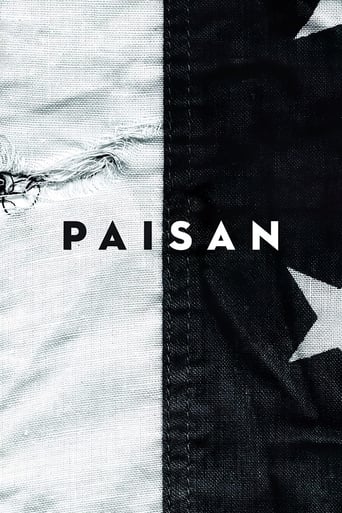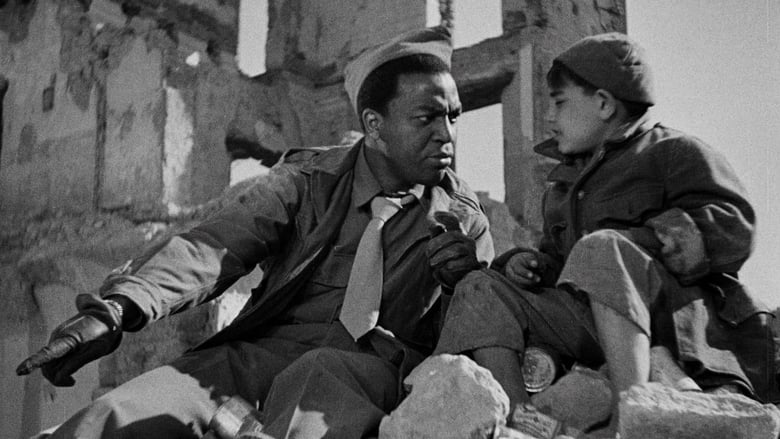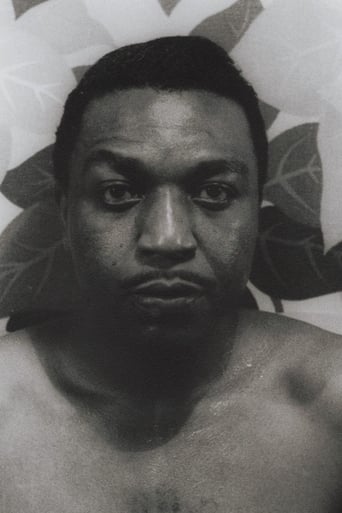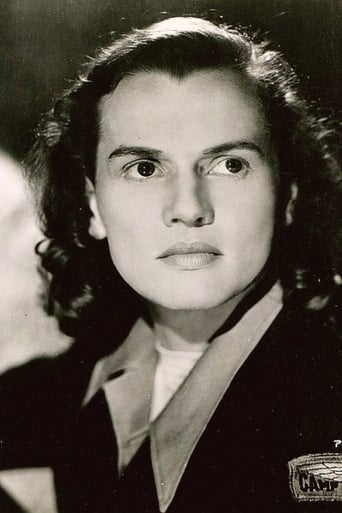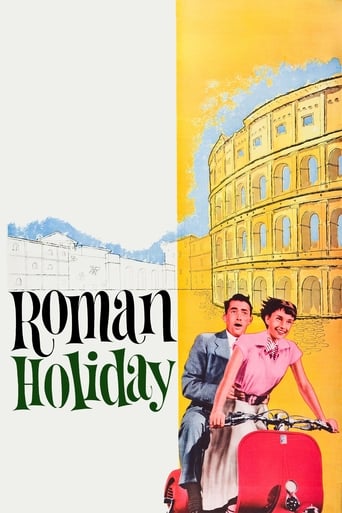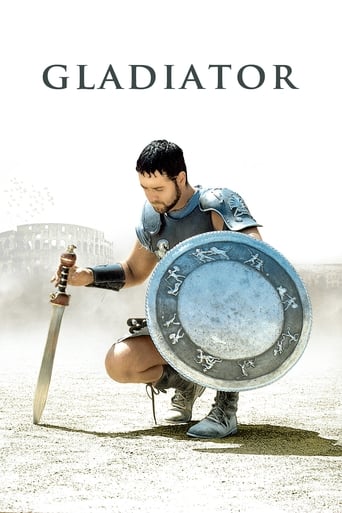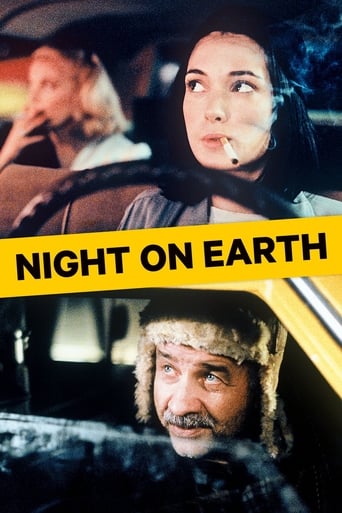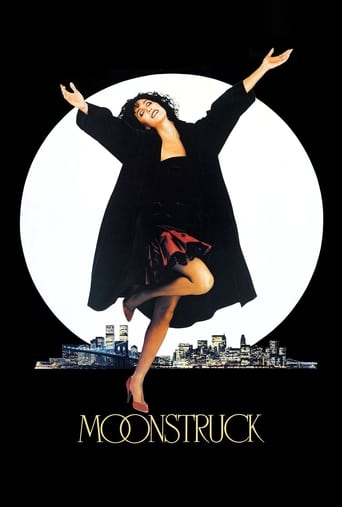Paisan (1946)
Six vignettes follow the Allied invasion from July 1943 to winter 1944, from Sicily north to Venice.
Watch Trailer
Cast


Similar titles
Reviews
So much average
Although it has its amusing moments, in eneral the plot does not convince.
I think this is a new genre that they're all sort of working their way through it and haven't got all the kinks worked out yet but it's a genre that works for me.
The joyful confection is coated in a sparkly gloss, bright enough to gleam from the darkest, most cynical corners.
"Paisa" is Rossellini's masterpiece, an essential Neo-Realism movie and a major Italian classic. For the anecdote, "paisa" is an informal word meaning "countryman".Although this movie is about Italy's campaign at the end of WWII, it only briefly deals with its important moments: the Allied landing in Sicily, the battle of Monte Cassino, the Gothic line battle. These are just summarised with archive footage between the main scenes. Interestingly, it does not even mention other critical moments: the downfall of Mussolini, his escape, his brief so-called "republic", his final downfall and execution, the invasion of Italy by the German army, the deportation of Jews, etc. This because the movie shows war at human level: how war and its aftermath impacts people's lives and values; also, it revolves around the relationship between Italians and Americans. It is not a "war movie" in the generally accepted sense, but rather "humane stories during war".*** WARNING: CONTAINS SPOILERS ***To illustrate different aspects, it shows six scenes as the Allies progress north through Italy's landmarks. Three scenes occur during the battles (1, 4, 6) and three afterwards (2, 3, 5). Remarkably, the movie avoids the pitfall of many "vignette movies", namely the sensation of watching different shorts instead of a full-length picture: "Paisa" maintains a thematic and aesthetic unity throughout. At the same time, each scene has its own specific interest, which enhances the unique character of the movie.Aesthetically, it combines documentary and fictional styles, in a ground-breaking manner for the period. Every scene begins with archive footage: when fiction starts, it seems a continuation of archives. Also, as in a documentary, shooting is sober, stories are simple, themes are realistic. However, Rossellini introduces at carefully chosen moments fictional elements to enhance the dramatic impact of each scene: music, lighting, offbeat humour, surprising actions. The latter notably include: the Italian girl turns against the Germans (1); the GI first does not recognise the boy who stole his shoes (2); the GI does not recognise the woman he fell in love with six months before (3); a woman and a wounded man manage to pass the fighting line (4); the entire scene in the monastery feels out of this world (5); a small group of partisans resist the German army (6).Humour is another key element. It is tricky to introduce humour in a war movie, but Rossellini succeeds in order to avoid an altogether too tragic tone. The entire scene in the monastery (5) is humorous, which is acceptable because at that stage the war in the region is over and the monks do not have to face too tragic consequences, as opposed to the scenes in Naples (2) and Rome (3). The tone is satirical (the monks are nervous because a Jew and a Protestant are within their walls), but at the same time we understand how they feel. Another hilarious part, albeit much shorter, is the incredible dialogue between British officers (4): they are looking at the fighting from far away and talk in a phlegmatic manner as if the war did not exist. This humour partly balances the overall tragic tone of the movie: killings, poverty, cruelty. Tones are hence balanced between dark (1, 6), light (5), or both (2, 3, 4). Irony, this dark form of humour, is constant: the GIs think the girl shot their companion, while she tried to avenge him (1); the GI cannot get his shoes back (2); the GI thinks the woman he fell in love with is just another prostitute (3); the nurse crosses the line to find a man who is actually dead (4); the monks are tolerant up to a point (5). Irony in the last scene is subtler. Many scenes contain a touching speech by an American: the GI tries to talk to the Italian girl (1); the GI dreams of glory (2); the GI regrets the good spirits during liberation (3); the chaplain confesses he found peace of mind (5). However, the only speech in the last scene is the dreadful propaganda from the German officer about destruction and new order. This is highly ironic: it opposes the previous humane speeches; also, it was obvious in winter 1944 that Germany had lost the war and Nazism was utter barbarity.On top of death and destruction, war brings moral decay. People know what they are doing is wrong, but they have no choice: the GIs force the girl to help them (1); "Don't sleep else I will steal your shoes", the orphan warns the GI (2); the prostitute regrets the time when she was respectable (3); by crossing the fighting line, the man looking for his family gets a partisan shot (4); by asking for food in a house, the partisans expose its inhabitants to severe revenge from the Germans (6). Because deep down, people are decent and try to help each other: the girl turns against the Germans because she was touched by the GI trying to talk to her (1); the GI pities the orphan's misery (2); the usherette allows the prostitute inside without paying to escape the police (3); the partisans let the two civilians pass despite the risks for their cause (4); the peasants feed the partisans despite the risks (6). Hence the movie is mostly tragic with an optimistic message: after the war, hopefully a better world will emerge based on people's humanity that was temporarily crushed. Italians collaborators and German Nazis are seldom shown: they belong to the past. Symbolically, communication progressively improves between Italians and Allies during the movie: from impossible conversation (1, 2) to limited dialogue (3), to eventually efficient coordination (4, 5, 6). The last shot simply but beautifully illustrates hope: after a dramatic close-up on partisans thrown into the water, the camera moves up towards the horizon and the voice that previously described fierce battles announces the war will soon be over.
Paisa is a collection of six short films that make up the second part of a war trilogy, directed by Roberto Rossellini. As I watched all six films the main theme I observed was friendship, more specifically the ability to make and retain friends from many different social and cultural backgrounds. Although all the films carry with them this central theme, I am only going to be discussing the first film. This first film deals with three American soldiers, who hire an Italian woman, named Carmella, to lead them through a German minefield. Two of the men decide to go check out the territory, while the third man, whose name is Joe, and Carmella stay hidden in the basement of a seaside castle. While in the basement, Joe uses his limited knowledge of Italian to talk to and befriend Carmella. As they discuss both their lives, Joe and Carmella develop a friendship, at speed which can only be attributed to what I call, fast-friendships, developed at times of great stress, people just want to believe they are not alone in their war-torn life. Joe uses his basic skills in Italian, to talk to Carmella, who could by all accounts be considered the enemy, in fact when the other two soldiers, return to the castle and find Joe dead and Carmella missing, even they believe that Carmella is behind Joe's death. They themselves would find it hard to believe that in the short time that Carmella and Joe were left together, that they could become such good friends. So good, in fact, that when the German/Italian soldiers shot and killed Joe, Carmella made sure to get revenge, sacrificing her own life so that Joe's death, would not go unnoticed. Unfortunately for Carmella, although Joe's death did not go unnoticed, it was not because of her sacrifice. Joe's two army buddies believed that Carmella was the one to kill Joe, which was really sad, because now in the future they will probably not be as quick to help and befriend the native population of the countries they are at war with.
Paisa is an important and well-known postwar Italian neorealist film. Is made up of six vignettes that are about the Allied invasion from July 1943 until the winter of 1944. They focus on the relationships between the freed Italian people and the Americans as their liberators. They begin in Sicily and end in Venice. A group of soldiers need an escort through the minefield terrain because they are not familiar. A woman offers to lead them, but ends up dying trying to protect one of the soldiers, but the Yanks think that she killed him. Then, a orphan boy steals the shoes from a soldier. The soldier becomes angry and follows the boy back to his town. In another story, a soldier meets a lady during the time where Rome was being liberated. She ends up being a prostitute. The United States nurse decides to chase her lover during the middle of the war, and there is much miscommunication between the characters. In the next one, there is a long and rather humorous discussion between a Catholic, Protestant, Jew, and a group of monks. The film ends with a lengthy and violent battle in the Po Valley with the OSS and a band of Germans who will not surrender. Each story in this film supports a different theme, tone, and set of characters. While regular movies are constricted to one or two themes, Paisa is not limited to this because of the fact that there are six stories. This allows for much more creative license to display different positive and negative aspects of this war. There are some historical facts within this film which allows it to not only be considered a creative masterpiece, but be applauded for its historical document.
Early in the film, the girl from the church who guides the Americans sounds just like the girl from Godfather II who Michael marries while hiding in Sicily. They're both young and Sicilian. If it were just their voices, I could never tell the difference. Not just voice, but their attitude and demeanor are the same. I've never been to Sicily, but this seems to confirm what a young Sicilian woman sounds like. This authenticity really adds to the goal of Italian neo-realism; the goal of capturing real human behavior and shying away from an actor's "fake" portrayal.Rossellini uses actors and non-actors in the film. It is difficult to separate the two. I think I can safely say all the characters with no dialogue are non-actors. They are extras, hired, dressed (maybe in their own clothing), and placed where need be. The rest with dialogue are harder to distinguish as either actor or non-actor. All the lines seem to be delivered in an amateur way. Even those that may be actors seem to make efforts to seem as stiff and natural and real as would a non-actor appear to be. Close-ups may be the only give away. And this is not always sure. There is a close-up of the Sicilian girl that really shows her emotion and deliberation of what she is about to do. Again, am I deceived? Is she actor or non-actor? At this point, it seems not to matter except for the fact that all the characters are seamlessly woven into the story. There are none who give an obvious performance. There are none who stick out or are identifiable were it not for the credits, which I don't pay attention to anyways. What remains is praise for Rossellini's vision and execution.

